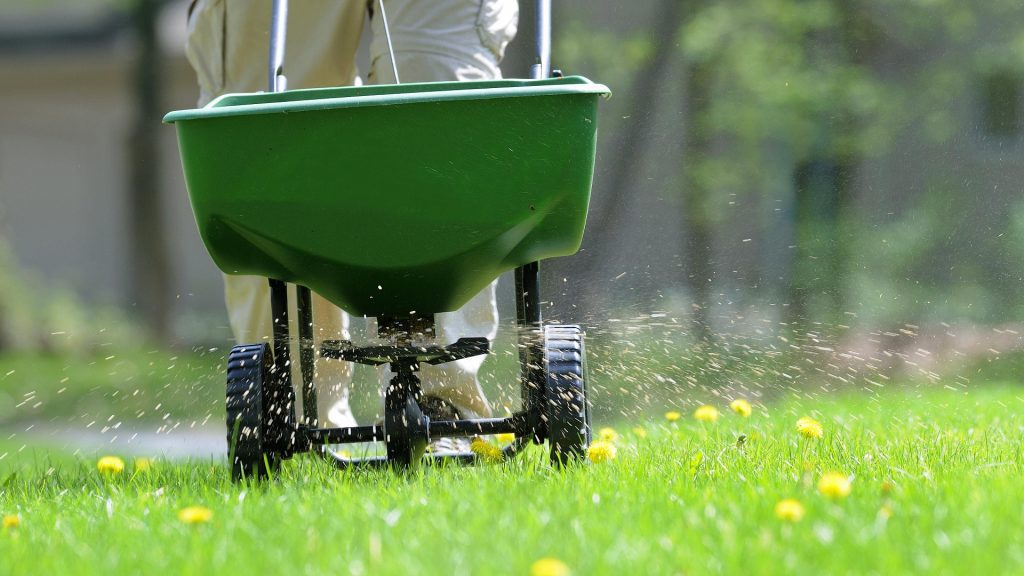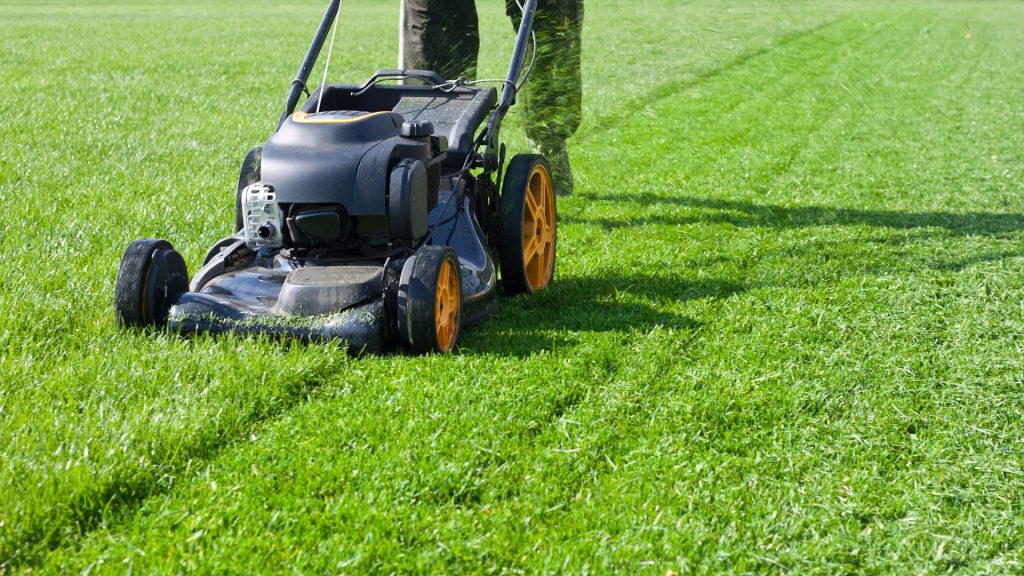
How Long Does Lawn Fertilizer Last?
Grass can do a great job of growing on its own without our help, but if you want your lawn to reach its maximum potential, you need fertilizer.
This simple product comes with a lot of benefits, but also questions, and people are often unsure about how long it lasts both on the shelf and on the ground.
How long does lawn fertilizer last? The shelf life of lawn fertilizer depends on its format, with most types having a shelf life of at least four years. Dry fertilizers are more stable and can last for a lifetime when stored properly, and liquid fertilizers can potentially stay good for around eight years. Once applied, they deliver nutrients for weeks to months, so you should only have to fertilize annually.
Timing is everything with gardening and when you’re talking about fertilizers, it’s especially important.
This guide answers all of your questions about this crucial lawn food, including how to store them and how long it’ll feed your grass once applied, so read on to find out the best timing for your fertilizer.
What is Fertilizer Made Out Of?

If you’ve ever spent some time browsing the fertilizer aisle at your local gardening store, you’ll know just how many options there are to choose from.
In each of these fertilizer products, there’s a unique blend of ingredients that can impact their effectiveness and how long they last.
At its most basic, lawn fertilizer is comprised of nitrogen (N), phosphorus (P), and potassium (K) which is shown on the product label in a ratio.
These are all elements that won’t expire, so it’s more about the other ingredients when you’re trying to determine how long a fertilizer will last.
Other ingredients found within lawn fertilizers include surface coatings, insecticides and pesticides, wastes like sewage sludge, raw materials, zinc and other metals, and organic matter.
Each of these has a shelf life and the specific combination of ingredients found within a fertilizer will dictate firstly how long it can be stored and secondly, how long it effectively feeds the grass it’s been applied to.
The Average Shelf Life of Fertilizer

Fertilizer can only be as effective as its ingredients, which is why it needs to be applied when it’s as fresh as possible.
Depending on the form and formula, there are varying years of shelf lives for fertilizer which can impact its usefulness, so consider how these types can differ.
- Dry fertilizers: If you’re looking for a long-term fertilizer that you can leave in the shed for years without a worry, dry types are the way to go. Your average dry fertilizer will last for decades as long as it doesn’t have any additional ingredients, as the NPK elements won’t expire. Those that are mixed will last less long, with between four and 10 years being the average lifespan.
- Liquid fertilizers: Liquid fertilizer is slightly less stable and it’s likely you’ll have to replace any unused product more often. Depending on the ingredients, you can expect a liquid fertilizer to be okay for use for between four and 10 years. The storage method for a liquid product is a lot more specific than dry fertilizers, so it’s easier to turn them bad as well.
- Fast-acting fertilizers: Usually coming in the form of liquid, fast-acting fertilizers should last between four and 10 years also. They feature more than the standard elements and are usually in high doses, so you have to be careful about how they’re stored and applied.
- Slow-release fertilizers: A slow-release fertilizer will likely be in granular form which means its lifespan can be 20 years or more, depending on the specific ingredients in it. This dry type of fertilizer is more shelf-stable and has fewer restrictions on how to store it, so it works well for people who live in areas with extreme weather conditions.
- Organic fertilizers: Organic fertilizer is made with only natural ingredients that haven’t been chemically treated, and this usually means they have a shorter shelf life. On average, you can expect an organic liquid lawn fertilizer to last for up to five years, and sometimes less if stored in unsuitable conditions.
- Compost: The beauty of using homegrown compost for your lawn fertilizer is that it stays good for years. With an indefinite shelf life, compost won’t ever go bad, but it can lose some nutrients and effectiveness, so you should continue adding to it when possible.
- Weed and feed fertilizers: The addition of pesticides and herbicides to fertilizers causes them to have a shorter shelf life, so if you want something long-term, we advise avoiding them. These products will have a maximum lifespan of four years thanks to the additives and they could be less if stored incorrectly.
Storage Tips for Lawn Fertilizer

A quick calculation of all of the gardening supplies and products you use to keep your lawn looking its best will highlight why it’s so important to take care of what you have.
Follow these tips to ensure your lawn fertilizer lasts as long as possible in storage so that you can get your money’s worth.
- Store carefully: Choose a dry place where no moisture can get into the fertilizer product, and avoid direct sunlight as well. If needed, store it within a sealable plastic bag or container to give the fertilizer another layer of protection against moisture.
- Stick to the instructions: Follow the label of the fertilizer carefully as this will give you the best advice on how to store it. Certain types of fertilizers require different things, so there’s no one-size-fits-all approach for storing them.
- Shake before use: If using a liquid fertilizer, shake the bottle up thoroughly before using it. even if it looks as though the ingredients are separated, they can usually be mixed together. for dry fertilizer, break down any clumps that have formed during storage before spreading it onto the lawn.
- Keep the original packaging: Never move the fertilizer out of its original packaging as this can impact its shelf life or cause it to mix with other products it shouldn’t. You’ll also have access to any information about the fertilizer on hand and be able to differentiate between the different kinds you use.
- Know when to throw it out: Look for signs that something has gone wrong and dispose of the fertilizer right away if you see them. Common symptoms of fertilizer turned bad are mold growth, an infestation of pests, a strange smell that’s not like its usual one, or a change in color from what it usually looks like.
How Long Does an Application of Fertilizer Last?

Another important aspect of timing when it comes to fertilizer is knowing how long the product will last once applied to your grass.
As with shelf life, the different types of fertilizers and their ingredients can impact how long a fertilizer is effective, so check out these guidelines to learn more.
- Dry fertilizers: Within the dry fertilizer category, there are a few things that can impact how long it delivers nutrients to the grass for. Usually, though, they’re slow-release, so it will provide the lawn with what it needs for months at a time, and sometimes up to nine months from a single application.
- Liquid fertilizers: When you spray on a liquid fertilizer, it starts providing the grass with nutrients right away as it’s able to be absorbed better in this form. These products are usually classed as quick-release fertilizers then, so they will deliver these ingredients for up to four weeks.
- Fast-acting fertilizers: A fast-acting fertilizer features nutrients in a readily available form which means it starts delivering them almost instantly. These types of fertilizers should last for up to four weeks giving nutrients to your grass, but the benefits will be felt for longer.
- Slow-release fertilizers: As the name suggests, slow-release fertilizers take longer to release the nutrients, and they can last for up to nine months doing so. These can usually be applied just once a year for year-long results.
- Organic fertilizers: Known as one of the longest-lasting fertilizers, many organic products can last for years providing nutrients to the soil. Of course, it depends on the type of organic fertilizer as they all differ in their effectiveness, but it’s a good choice for the planet either way.
- Compost: The decomposition of compost can take up to 12 months, and during this time it’s breaking down nutrients and spreading them through the lawn. Not all compost is the same though, with some only lasting a few months in comparison.
- Weed and feed fertilizers: These fertilizers are among the shortest lasting with an application being recommended every six months to continue seeing results. However, due to the harsh nature of the ingredients, extra caution needs to be taken when applying weed and feed-type fertilizers.
How Soon Will Fertilizer Start Working?

After applying fertilizer, you’ll need to wait a certain amount of time before the nutrients start being delivered to the grass.
How quickly it becomes effective will depend on the type of fertilizer and whether it’s labeled as a fast-acting or slow-release fertilizer, as well as specific ingredients in it.
A fast-acting fertilizer will feed your lawn instantly and some people report seeing a difference in just a couple of days.
On the other hand, slow-release fertilizers take a few weeks to start noticing results, as they slowly release the nutrients over time. Depending on what your lawn needs, either of these is likely to be a better fit.
The timing of when you apply the fertilizer also matters, with the peak growing cycle being the best time. For grass, this means during spring, so getting it right on the calendar will ensure it delivers nutrients for even longer.
Timing is Everything
Whether it’s learning the correct storage methods to prolong the shelf life or knowing how to apply it just right for maximum effectiveness, timing is important when it comes to fertilizer.
With a little bit of knowledge and some actionable tips you can use, you’ll get the most out of your lawn fertilizer in the future.
Related Questions
Applying fertilizer with the correct timing is one of the best things you can do for a luscious and healthy lawn, but it can also be confusing.
If you want to learn more about getting the fertilizer application just right for your grass, check out these FAQs that can teach you the basics.
What is Weed and Feed Fertilizer?
Weed and feed fertilizers contain herbicides and pesticides in conjunction with the usual fertilizer ingredients.
These types of products are designed for an all-in-one approach as they kill off weeds and pests while delivering nutrients to the plants and grass, but they’re not suitable for every setting.
What is Lawn Topdressing?

In gardening, topdressing is the name given to the application of a product over the top of existing turf, like additional soil or organic materials.
The product is thrown over the grass casually without needing to be worked into the soil, and it delivers a boost of nutrients with minimal effort.
How Do You Fix Fertilizer Burn?
If your grass has been burned by fertilizer and is showing signs like yellow or brown discoloration, it can usually be flushed out with water and repaired.
After assessing the roots of the grass, start a watering schedule that delivers around one inch of water a day for a full week and see if it’s enough to flush out the excess salt and restore color to the grass.
Resources:

